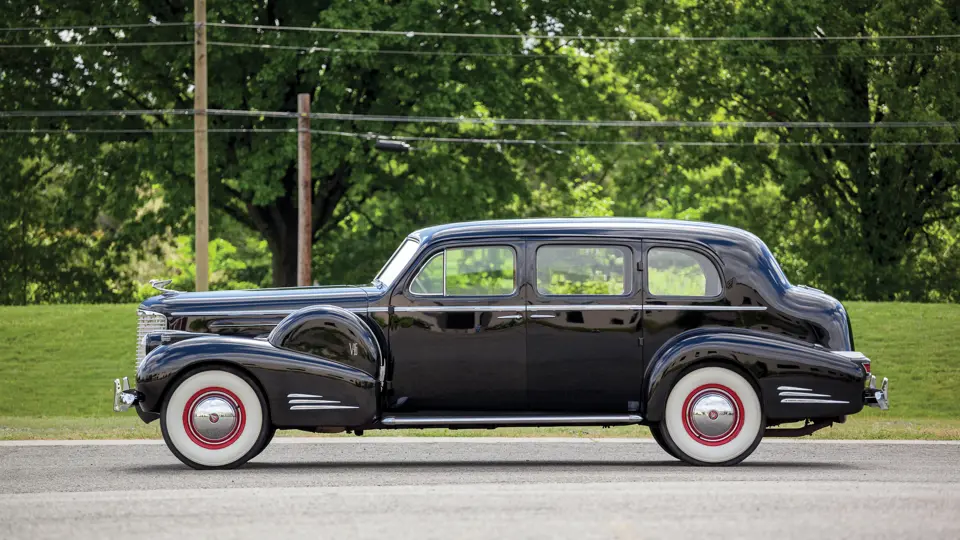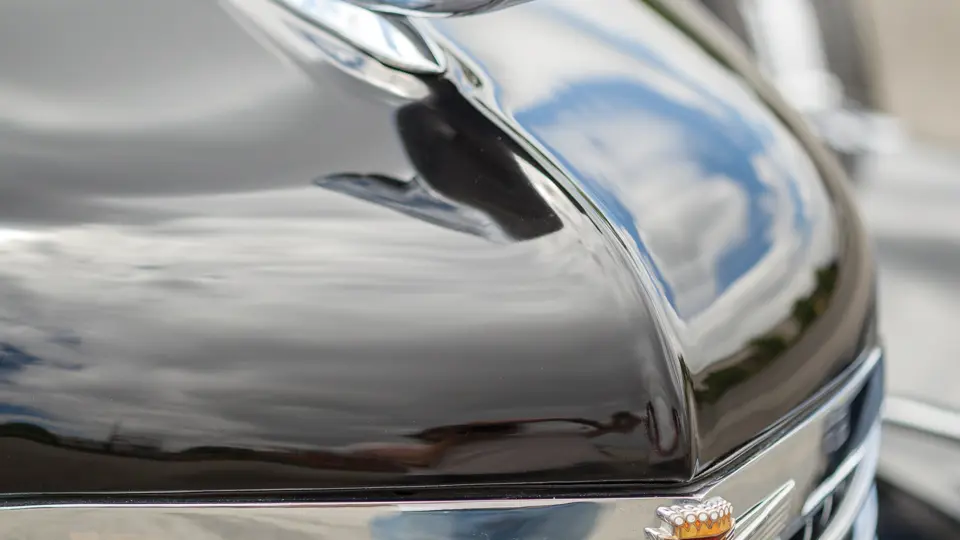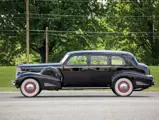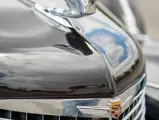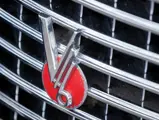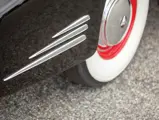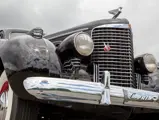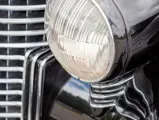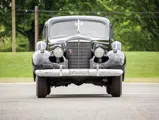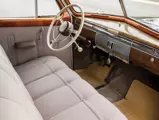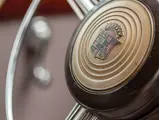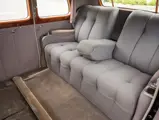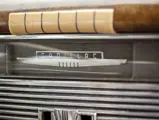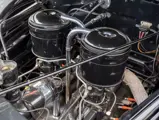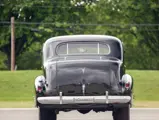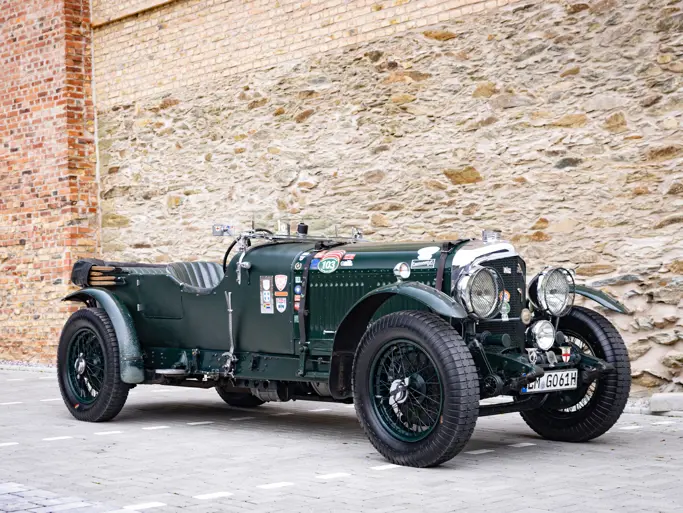
1939 Cadillac V-16 7-Passenger Sedan by Fleetwood
{{lr.item.text}}
$44,000 USD | Sold
{{bidding.lot.reserveStatusFormatted}}
- AACA First Junior and CCCA National First Prize winner
- One of just 138 V-16s produced for 1939
- A lovely older restoration with its original cloth interior and showing just 72,000 miles
- CCCA Full Classic and eligible for all CARavans and events
Series 90. 185 hp, 431 cu. in. L-head V-16 engine, three-speed manual transmission, independent coil-spring double-wishbone front suspension, rear live axle leaf-spring suspension, and four-wheel Bendix dual servo-assist hydraulic brakes. Wheelbase: 141.5 in.
Among the most significant announcements made in the American automobile industry late in 1929 was the letter that Cadillac President Lawrence Fisher dispatched to both his dealers and the motoring press on December 10th. A new 16-cylinder Cadillac was to be displayed at the New York International Automobile Show on January 4th, 1930. In addition, the car was to appear at the General Motors Salon in the Hotel Astor and on 57th Street, just off 5th Avenue, in the posh two-story building that housed the permanent Cadillac Salon of Uppercu Cadillac, a dealership under the dynamic leadership of one Inglis M. Uppercu. Indeed, it was the letter to Uppercu that Lawrence Fisher had sent to the press. The cylinder wars were in full swing, and Cadillac had just delivered the knockout punch!
These cars featured coachwork by Fleetwood, which conveniently had a design office located on the second floor of the aforementioned Cadillac Salon. In addition to the senior design staff, there were several draftsmen who completed the final drawings of bodies and components based on specifications given to them by both designers and engineers. Twenty-five percent of all V-16 Cadillacs would be delivered to New York City buyers in 1930 and 1931, underscoring the importance of this exclusive arrangement.
Historically, the V-16 Cadillac would be the wrong car for the wrong time, but Cadillac recognized it needed something spectacular to do battle with the likes of Packard, Peerless, Pierce-Arrow, Marmon, and Lincoln, among others. Besides, the initial thinking after the stock market crashed was that it was a fluke and recovery was right around the corner. The simple fact was that the Great Depression was settling in, and America was not buying extravagant luxury automobiles in significant numbers. Despite the economic downturn, the cylinder wars continued. After introducing a V-16 in 1930, Cadillac added a V-12 model for 1931. While the flagship V-12s and V-16s would garner all the fanfare, the V-8-powered models sold in steady numbers, helping Cadillac’s bottom line during difficult economic times.
This grand seven-passenger Sixteen Sedan, style number 39-9023, has no Imperial division or divider window, but it does include rear jump seats in the passenger compartment. It is one of one hundred thirty-eight V-16s produced for 1939 and one of just eighteen touring sedans built that year. It features its original beige cloth interior in the front and back, and it shows just 72,000 miles from new. Its stately black exterior is complemented by dual side-mount spare tires and white sidewall tires. This Cadillac received its AACA First Junior at Hershey in 1970 and wears CCCA badge number 517, from when it was honored with a National First Prize in 1971. It has been part of the current owner’s collection for about 10 years, and during this time, it has been regularly maintained but sparingly driven. As an older restoration, it would make for an excellent tour car, and it is ideal for CARavans or CCCA and AACA local and regional events.
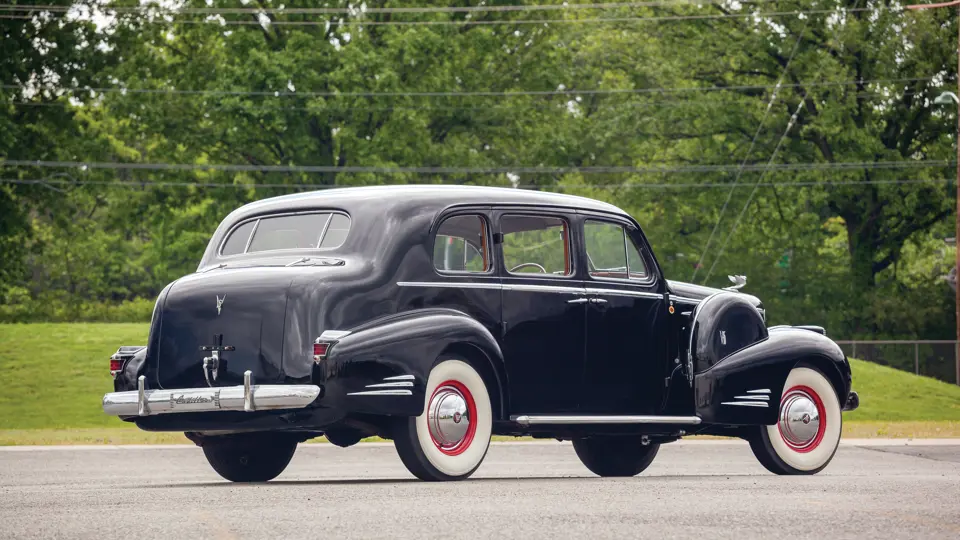
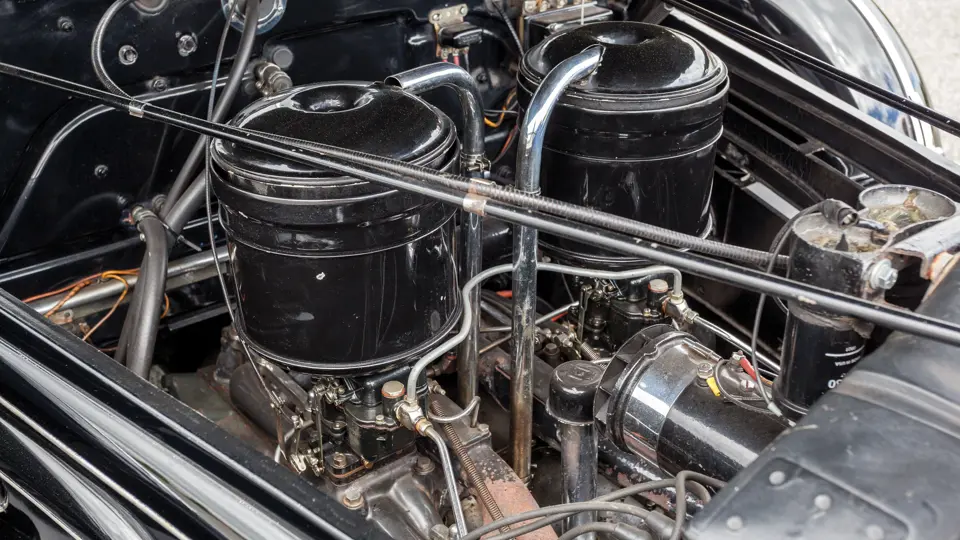


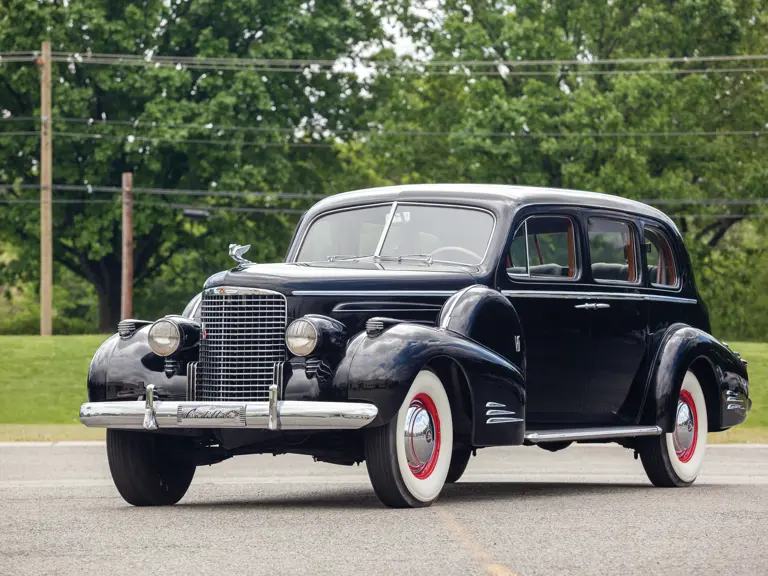
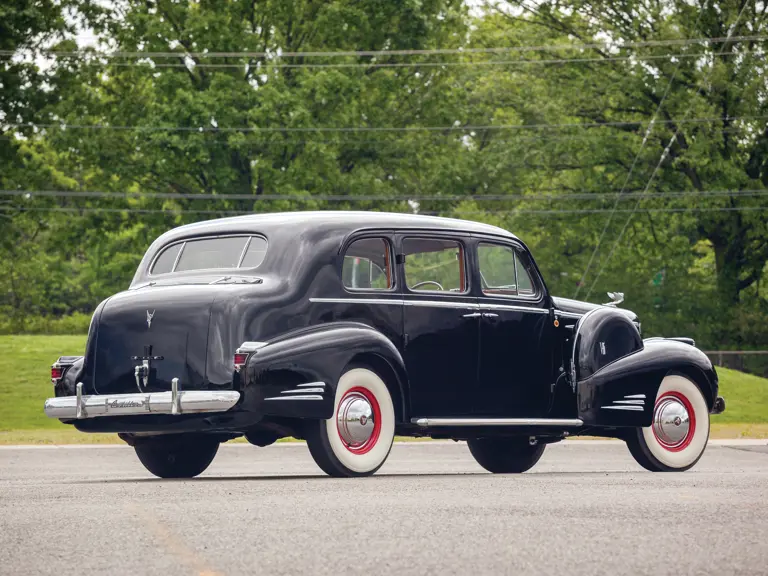

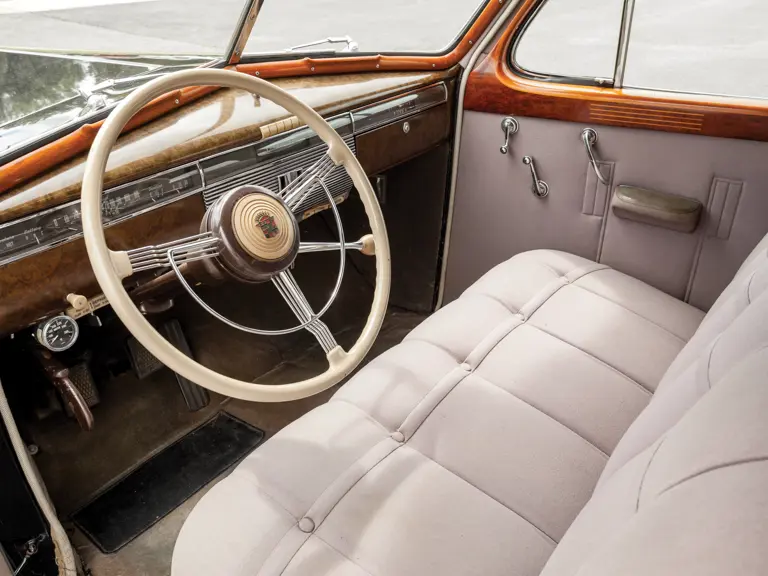
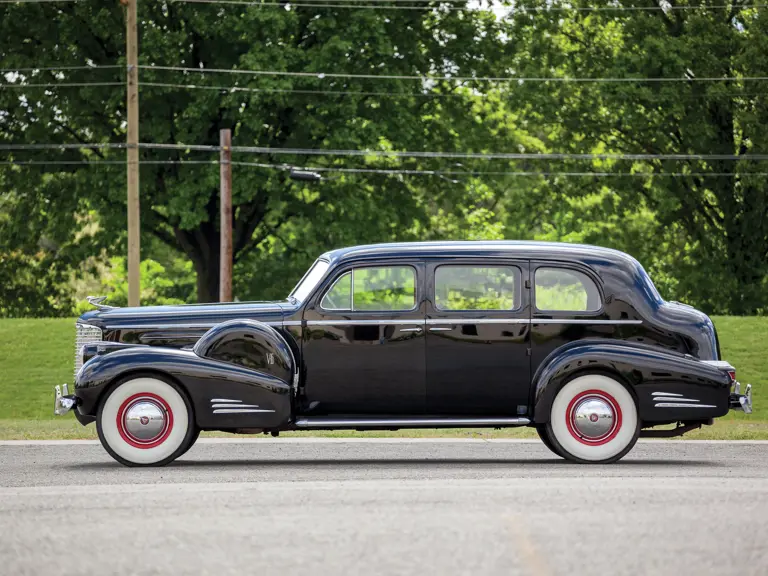
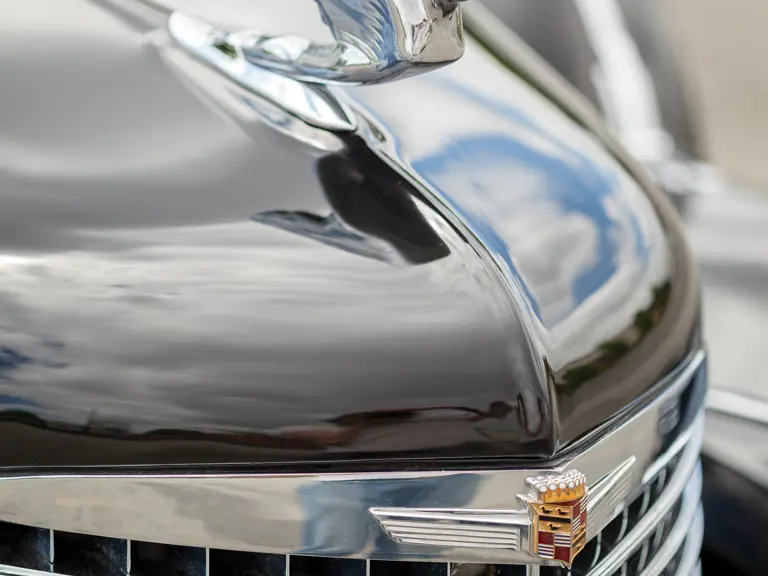
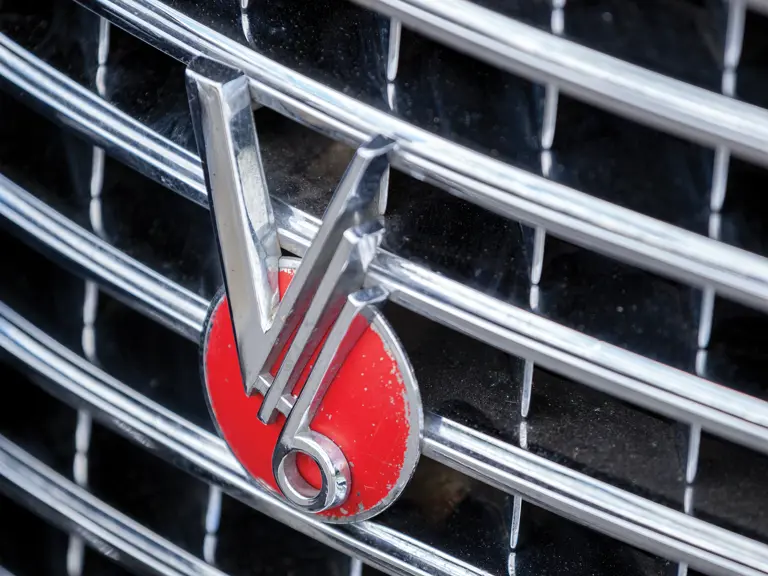
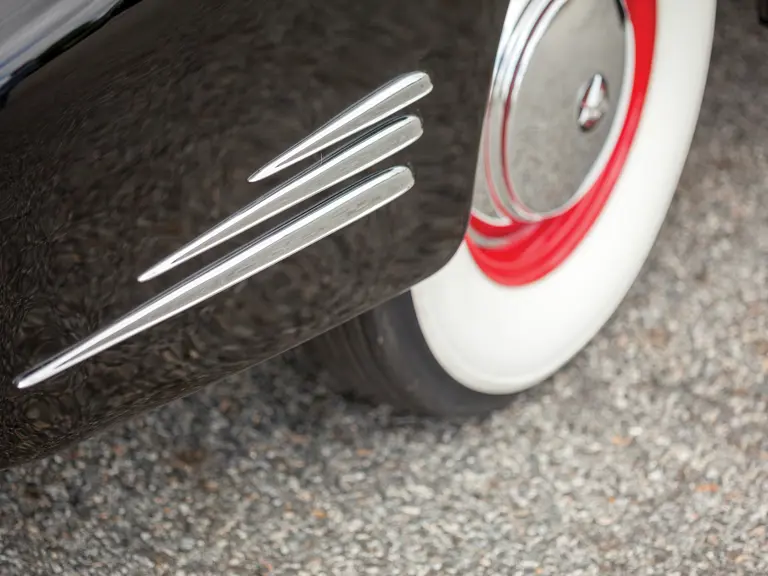
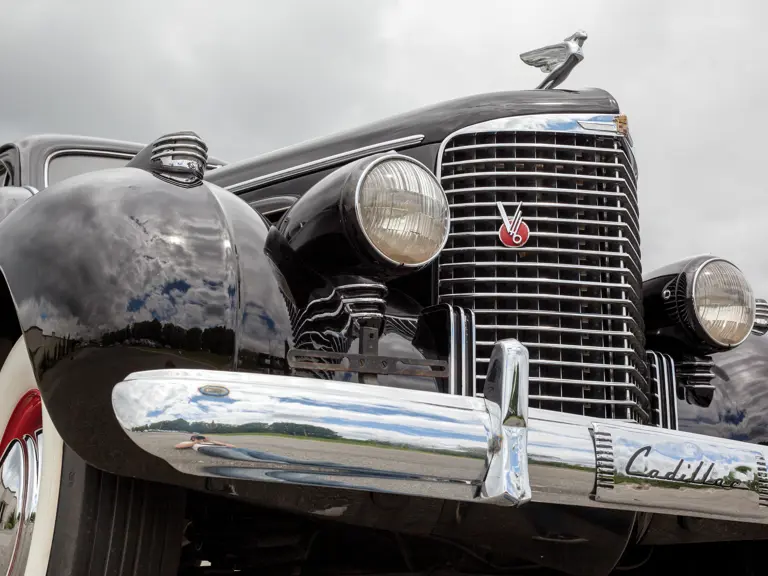
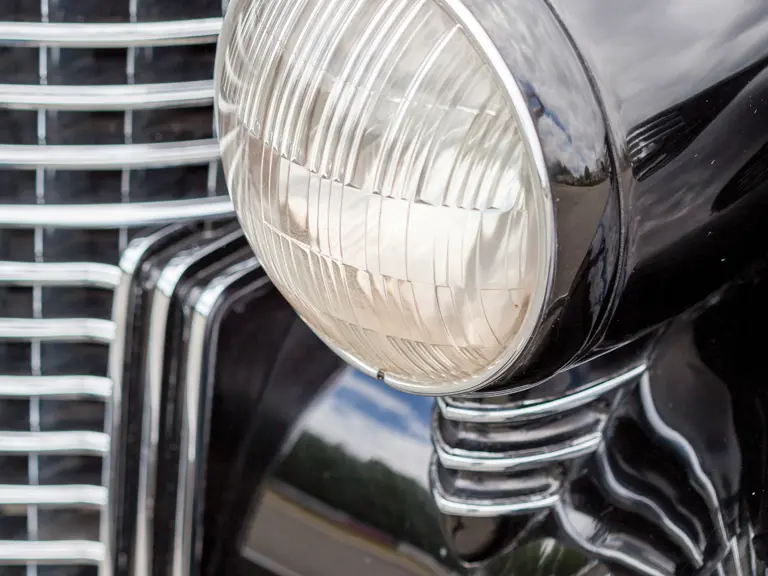
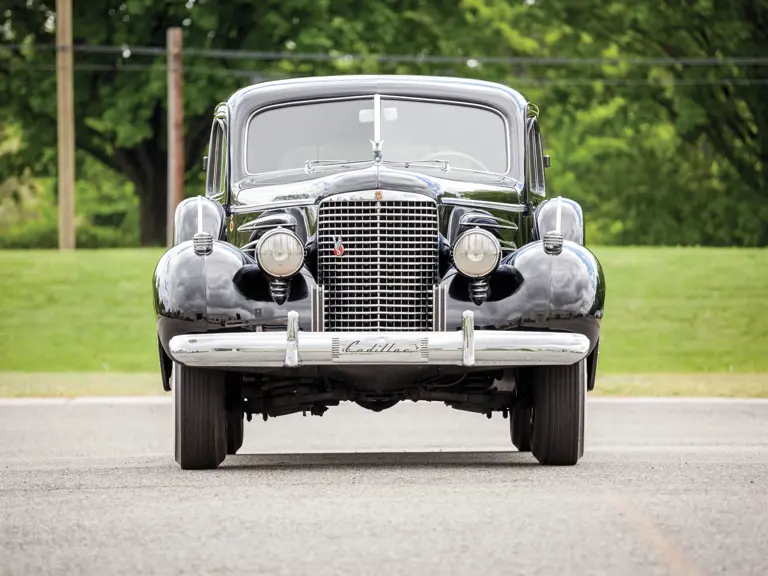
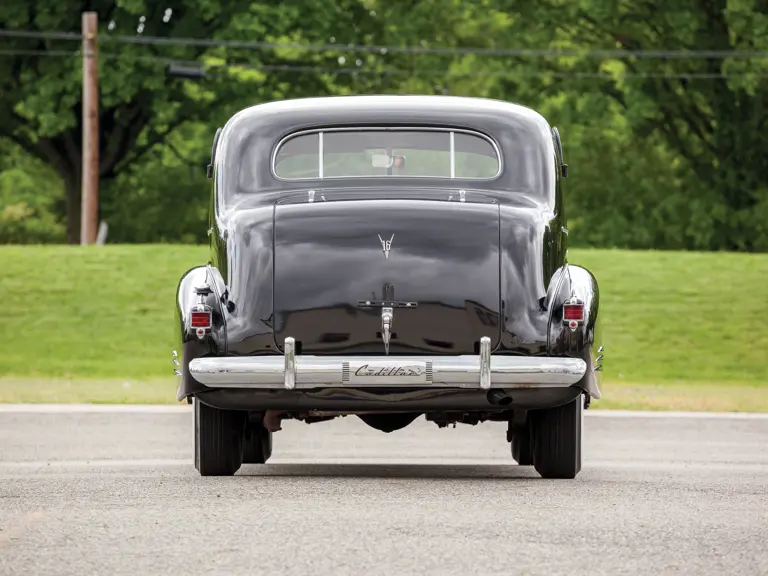

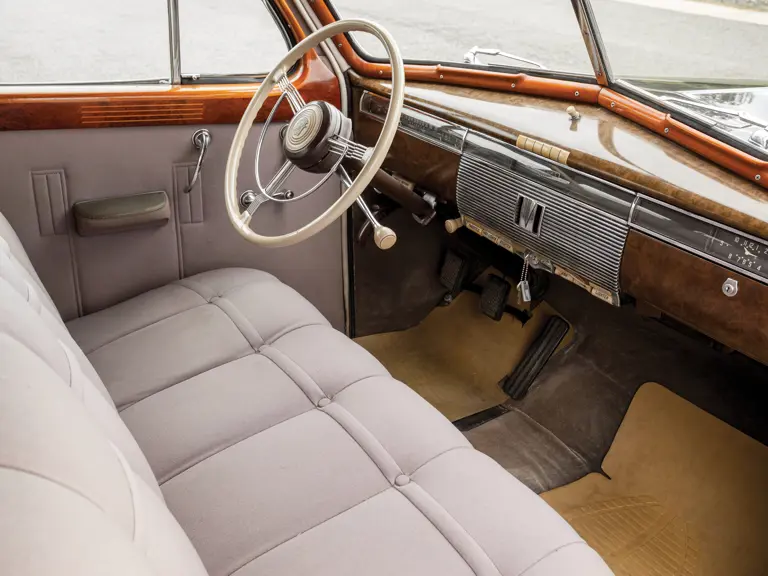
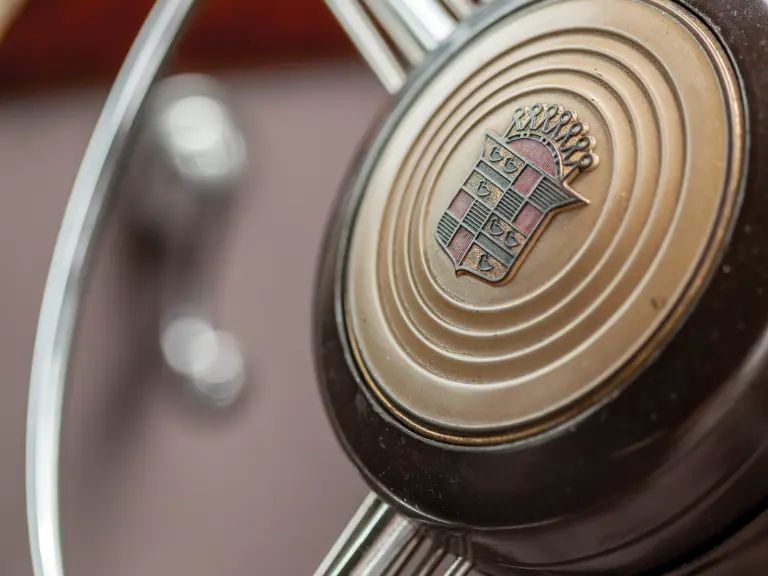
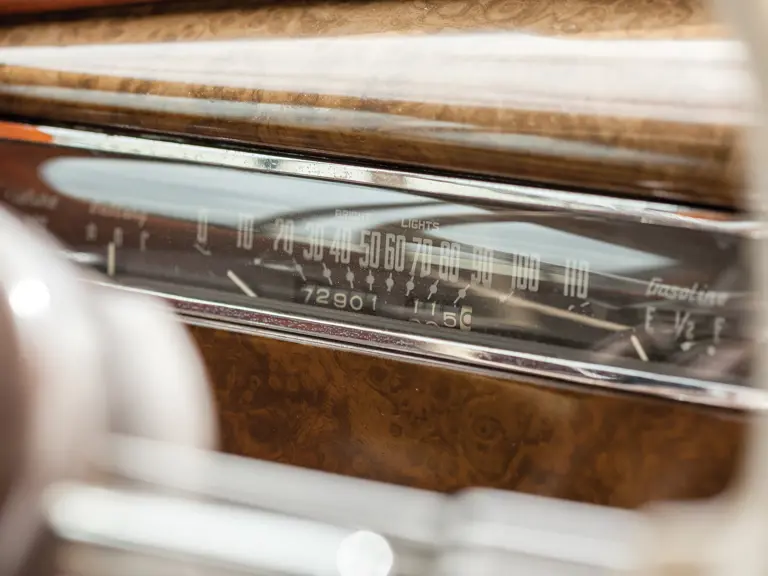
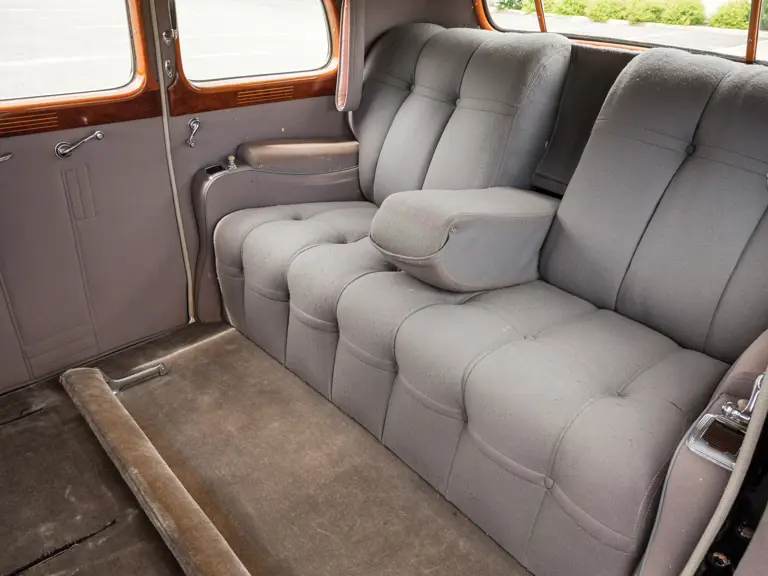
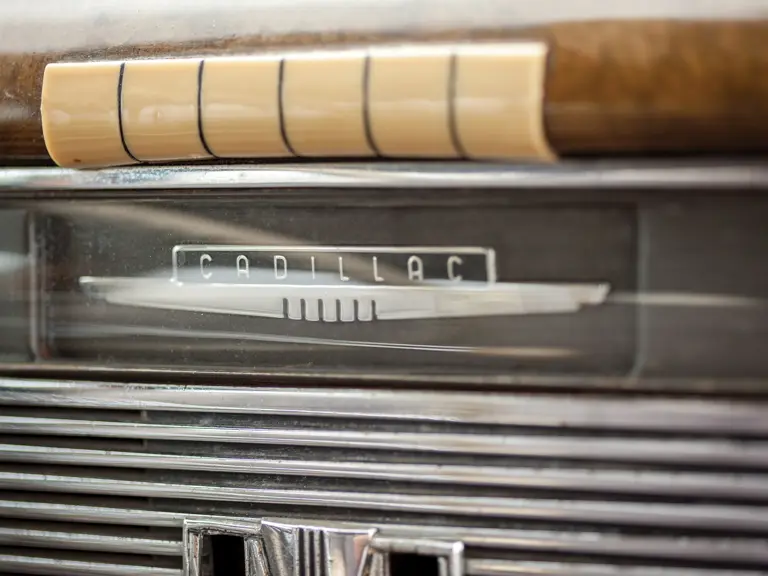
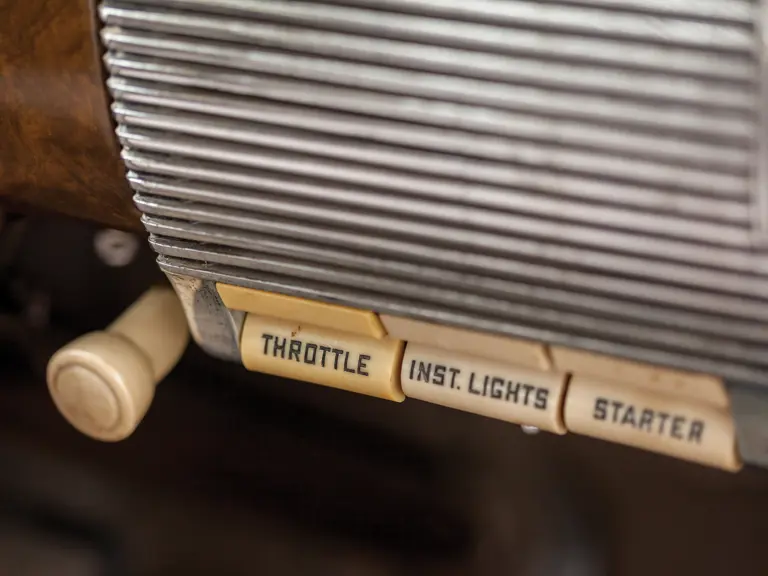
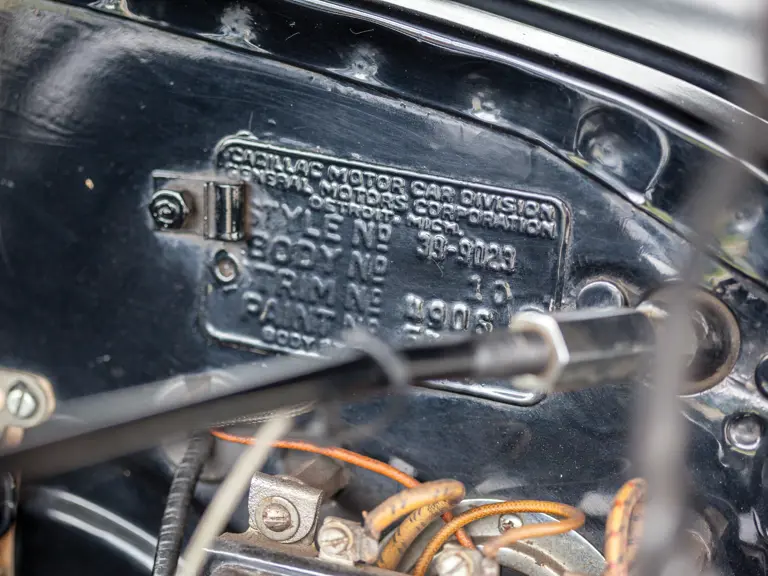
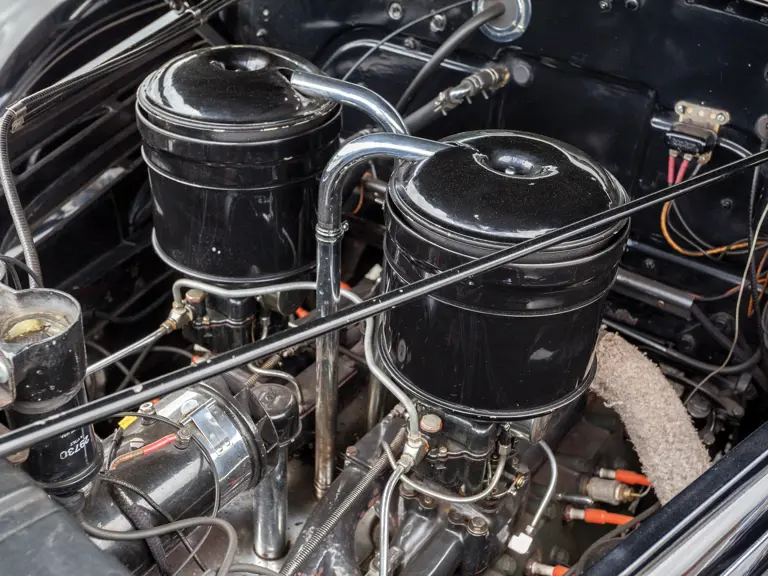
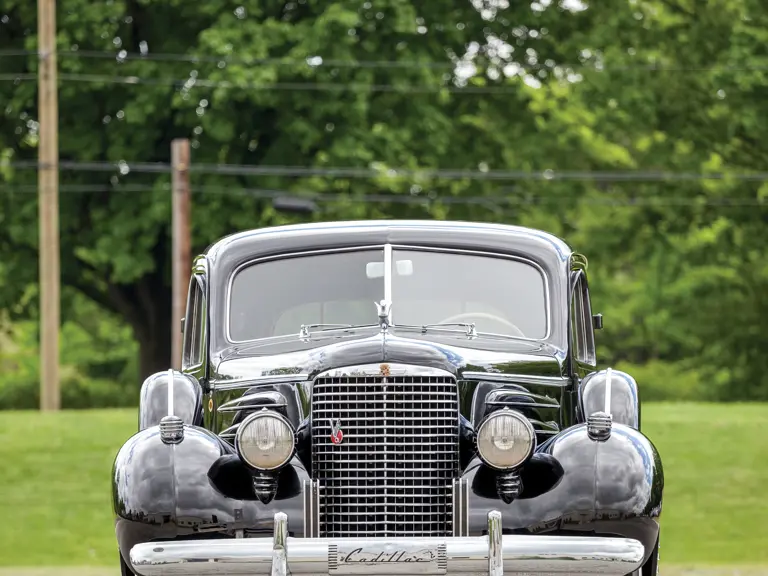
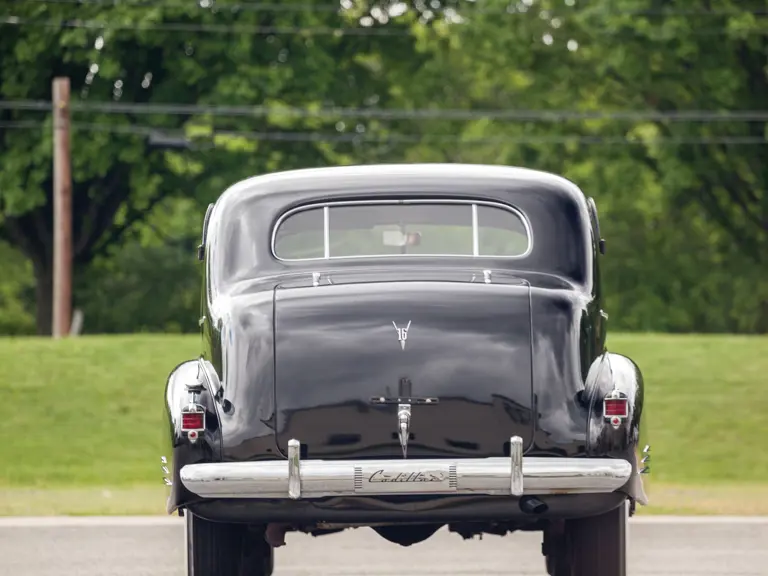
 | Plymouth, Michigan
| Plymouth, Michigan
